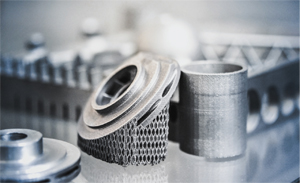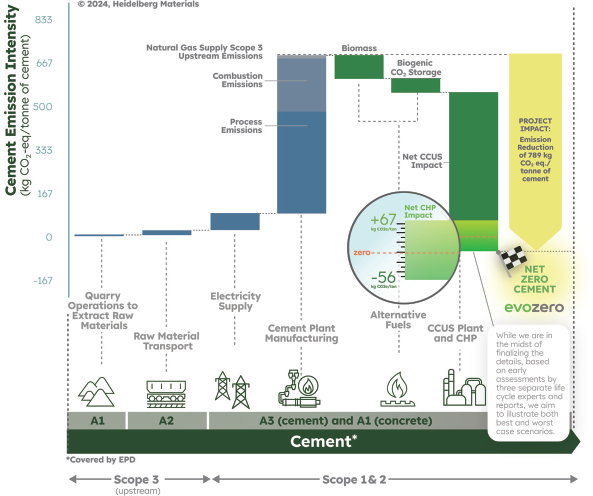March/April 2019
Communities: Industry
Additive Manufacturing in Three Dimensions
 OBJECTS PRINTED USING THE ADDITIVE MANUFACTURING TECHNIQUE OF LASER SINTERING
OBJECTS PRINTED USING THE ADDITIVE MANUFACTURING TECHNIQUE OF LASER SINTERINGOver the past decade, some have speculated that additive manufacturing, or 3D printing, may replace traditional manufacturing methods like machining and metal molding, to drastically change the industry landscape.
While that prediction may not be reality just yet, engineers are learning more about this technology every day and using it in everyday projects.
The US military and defense industry, for example, have embraced the technology. The US Army installed Rapid Equipping Force “Fablabs” in Afghanistan with 3D printers, laser cutters, milling machines and other tools to help troops quickly produce items like 3D printed weapon attachments on-site. In January, the Air Force installed a metallic 3D printed aircraft part on an operational F-22 Raptor fighter plane. Additionally, in 2017, the Navy designed and printed a carbon fiber submarine hull that could be used later this year.
Outside of the military, 3D printing is being used in medicine to create affordable prosthetics for those with missing fingers, arms, and legs. Automotive companies, like Ford, are using 3D printing to make end-use car parts. Additionally, 3D printing has a large role in rapid prototyping for designers, architects, inventors, and small businesses.
The potential applications for 3D printing grow larger by the day. In fact, the global 3D printing market is expected to exceed $21 billion by 2020. But several challenges are keeping 3D printing from becoming mainstream in manufacturing, despite the technology’s benefits: a lack of standardization, a shortage of knowledgeable skilled workers, and complications around intellectual property rights.
Although 3D printing allows engineers to create individual items, the goods that most 3D printers produce are inferior to those made through traditional methods, particularly when it comes to the consistency in quality, strength, and reliability.
According to experts with Deloitte, many people say quality assurance, especially for metal products, is the biggest obstacle to widespread adoption. “Put simply, many manufacturers and end users have difficulty stating with certainty that parts or products produced via 3D printing—whether all on the same printer or across geographies—will be of consistent quality, strength, and reliability.”
To assure consistent, high-quality products, manufacturers will need to identify the level of quality assurance 3D printed products need, while also analyzing the risks. This will mean engineers may have to change the way they think about the qualification process: ensuring performance of 3D printed parts before and during the build process, rather than after fabrication. While this is easier said than done, certain products, like aerospace and military parts, will require the most scrutiny when it comes to quality assurance compared to other 3D printed parts and products.
The need for highly scrutinized quality assurance of 3D printed parts will require industry access to knowledgeable, qualified professionals. An April 2018 report by SME, “Experts in Demand: Growth in Metal Additive Creates Need for Professionals,” shows the growth in the industry and provides employers with guidelines for the knowledge and skills needed for jobs in additive manufacturing.
Additionally, universities like Georgia Tech, MIT, and Ohio State are launching their own 3D printing labs or partnering with 3D printing and additive manufacturing companies to give engineering students hands-on experience. Both Penn State University and Carnegie Mellon University have even recently developed masters’ degree programs in additive manufacturing that provide students with knowledge of the hardware and software components of the technology, among other skills.
IC3D Printers, a Columbus, Ohio-based company that designs and builds custom 3D printers, recently partnered with Ohio State University’s Center for Design Manufacturing Excellence to install a series of printers and provide the center with high-quality filaments, or feedstock. Michael Cao, founder and CEO of IC3D, says the partnership will allow the company to use 3D printing for a variety of industrial processes.
Ethics and intellectual property laws are two areas that educators will need to cover when teaching young engineers about 3D printing. The technology, theoretically, gives anyone the ability to print any manufacturing design at any time. Copies of products or consumables could be replicated and lack the quality of the original product but maintain the appearance of the original product. This dilemma will require engineers and businesses alike to proactively protect and license their intellectual property.


 Volunteering at NSPE is a great opportunity to grow your professional network and connect with other leaders in the field.
Volunteering at NSPE is a great opportunity to grow your professional network and connect with other leaders in the field. The National Society of Professional Engineers (NSPE) encourages you to explore the resources to cast your vote on election day:
The National Society of Professional Engineers (NSPE) encourages you to explore the resources to cast your vote on election day:


